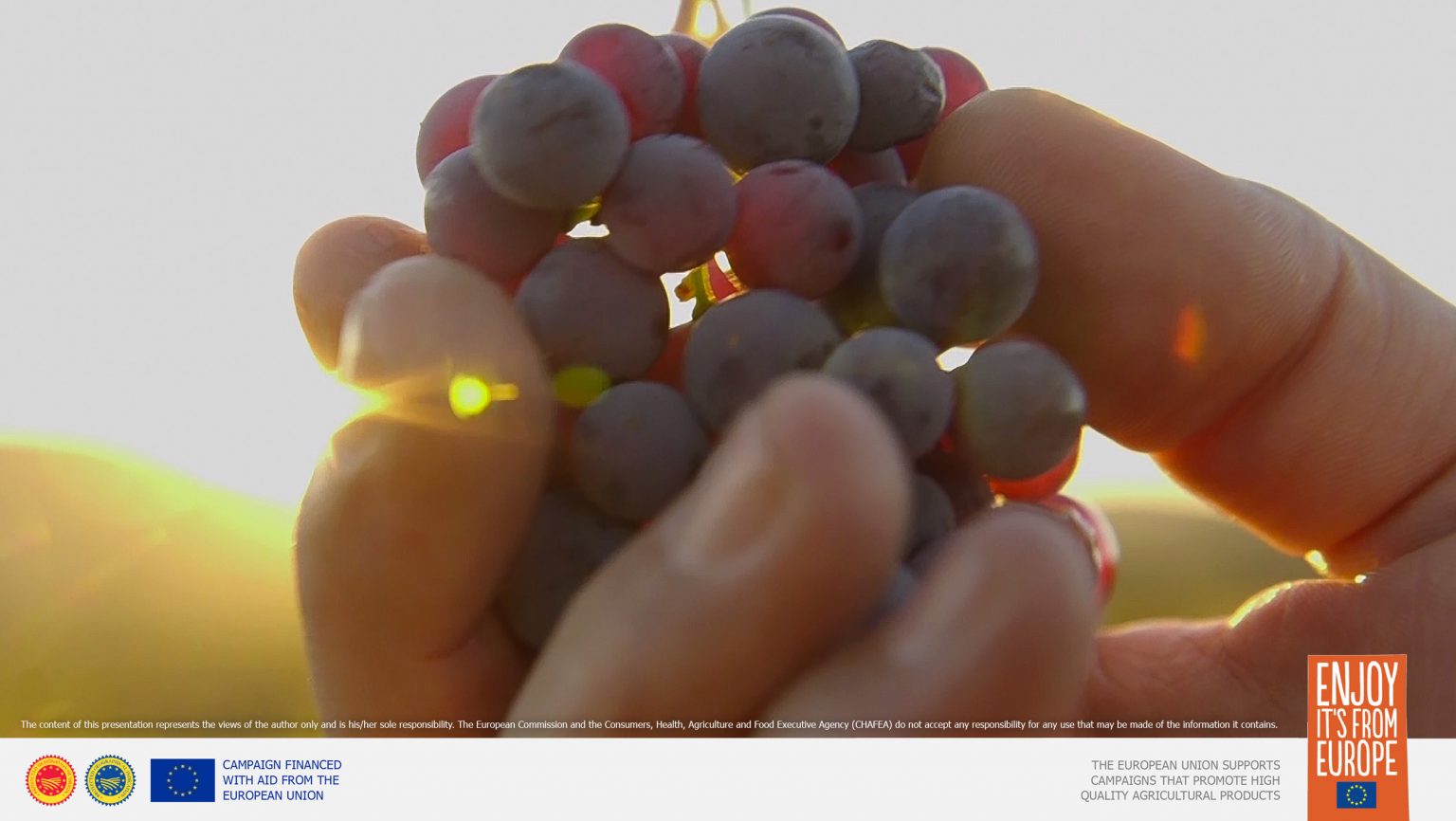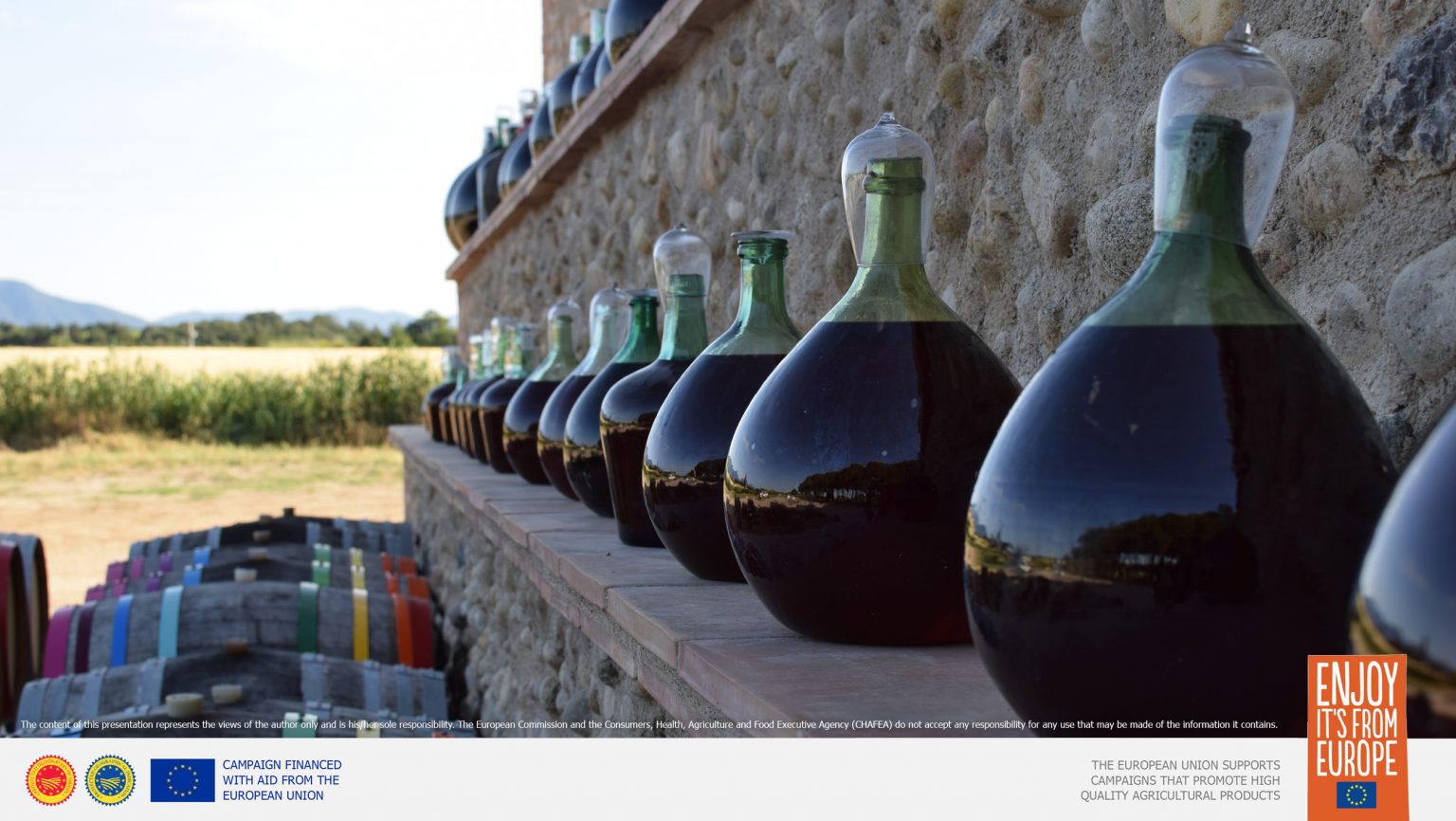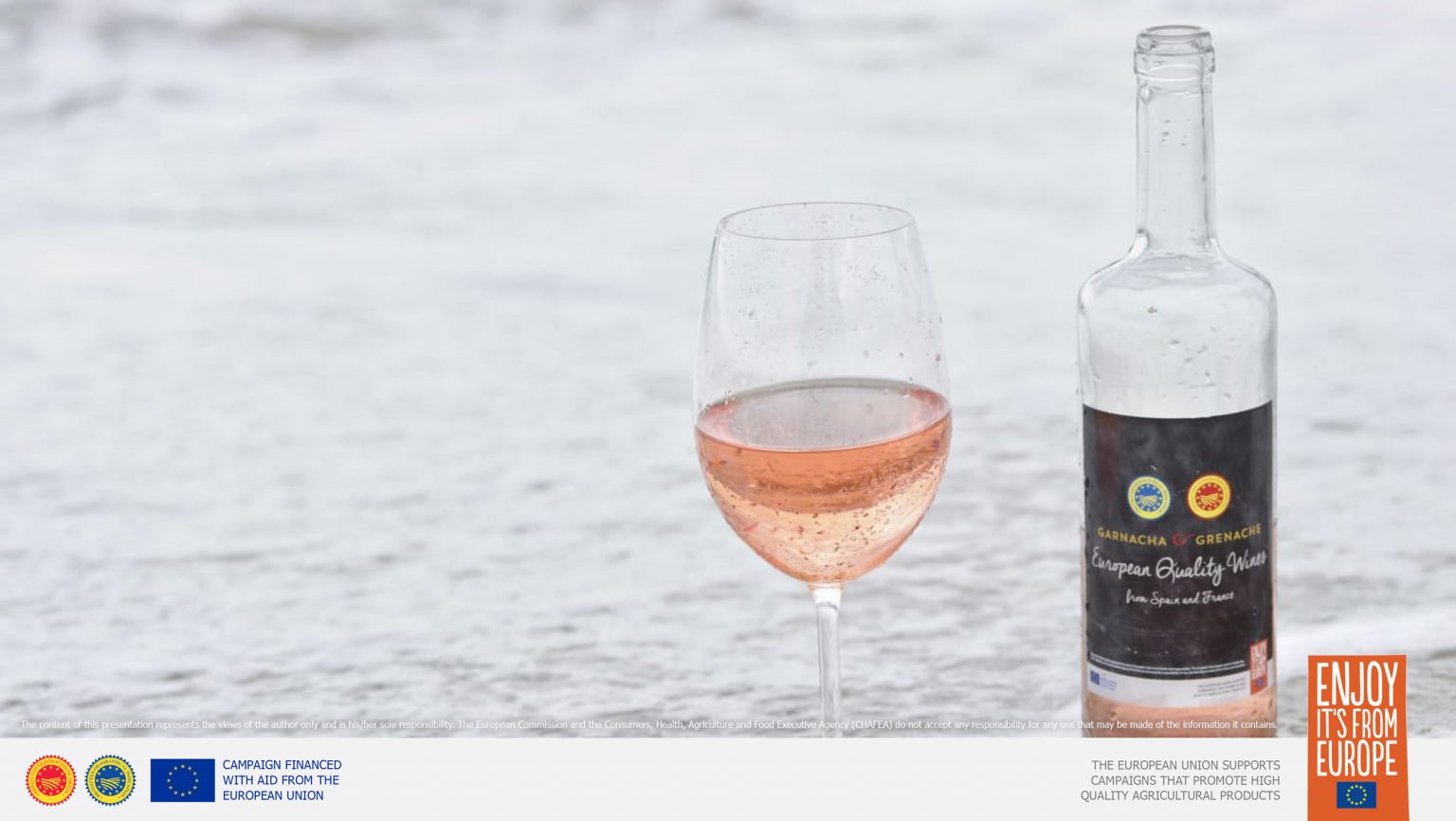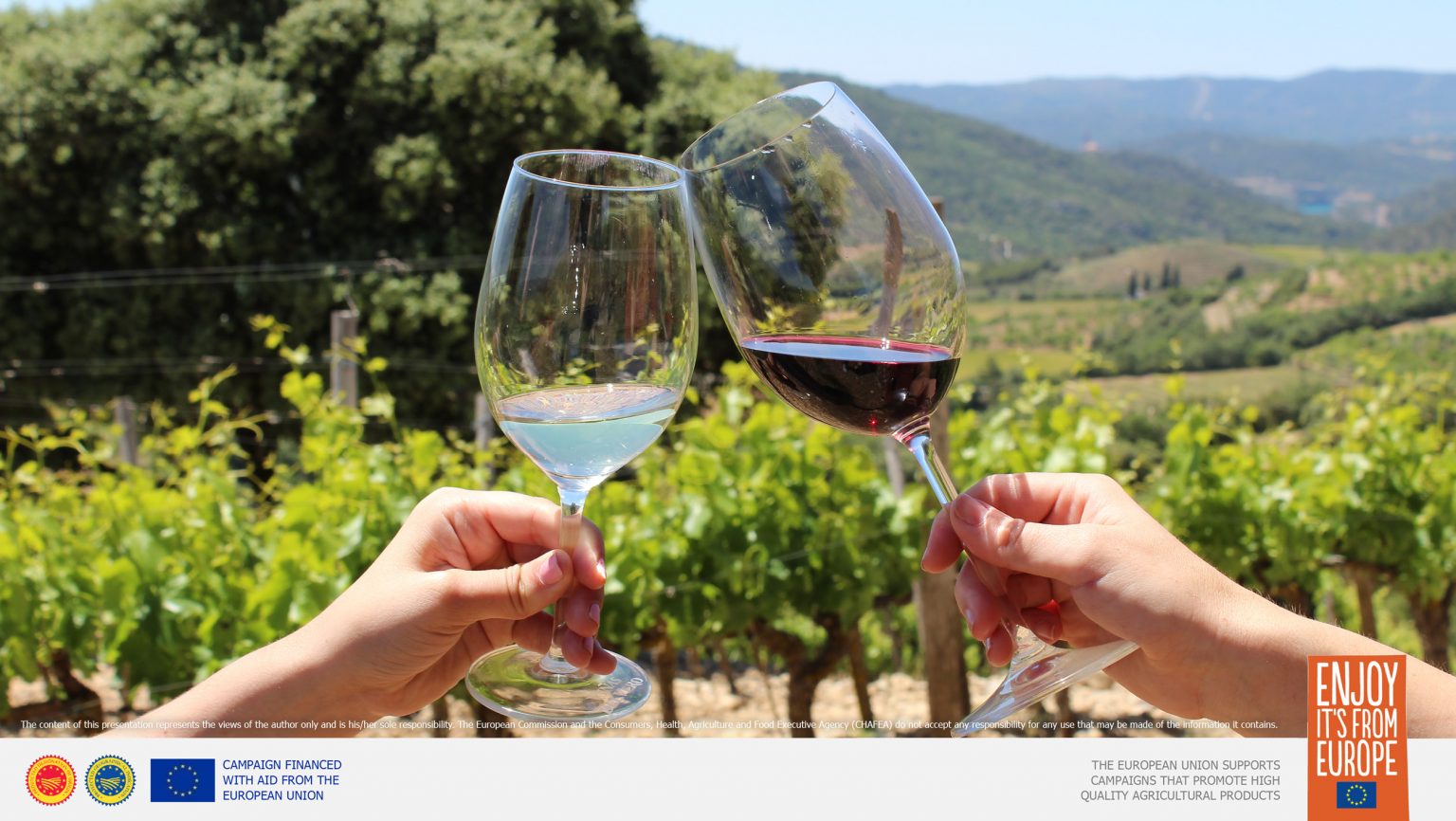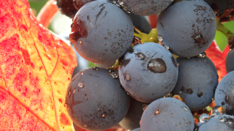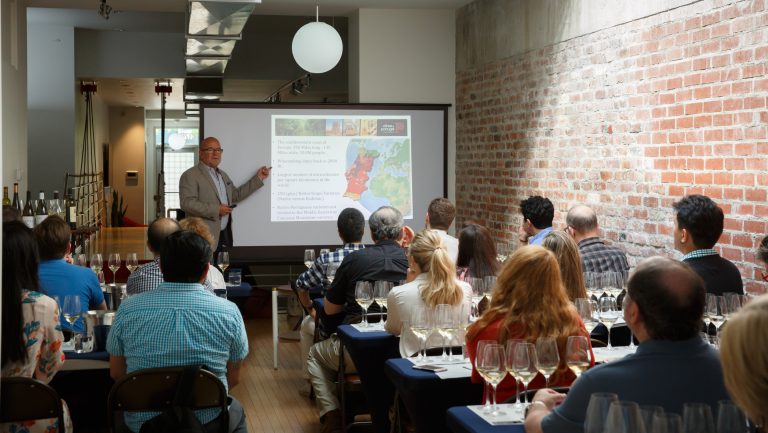This advertising content was produced in collaboration with our sponsor, European Garnacha/Grenache Quality Wines Program; it does not necessarily reflect the views of SevenFifty Daily’s editorial team. For more information, please refer to our ethics guidelines.
The European grape known as Garnacha in Spain and Grenache in France is a versatile variety capable of producing quality wines in an array of styles and flavor profiles. Depending on where the vines are grown, the fruit can be used for red, white, and rosé wines; still and sparkling styles; and even natural or fortified sweet wines. As these vines are extremely sensitive to variations in soils, climate, and elevation, the wines can vary dramatically from one appellation to another. Within the category of red Garnacha alone, one appellation may produce medium-bodied wines that are brimming with red fruit, while a nearby region might yield full-bodied, black-fruited, and tobacco-laden wines.
Although the grape is best known as a key component in Grenache, Syrah, and Mourvèdre (GSM) blends, contemporary European producers are demonstrating that older vines, limited yields, and the right terroir can produce premium-quality single-varietal wines. This guide provides an overview and history of European Garnacha/Grenache, as well as a look at some of the EU geographical indications—protected geographical indication (PGI) and protected designation of origin (PDO)—that have been producing high-quality wines from this grape for generations.
Any wines designated under PGI or PDO quality schemes guarantee their origin and are defined by European standards of excellence of EU agricultural production, such as food safety, traceability, authenticity, labeling, nutritional and health aspects, respect for the environment and sustainability, and the characteristics of EU agricultural and food products, particularly in terms of their quality, taste, diversity, or traditions that protect the integrity and reputation of wines from each region. For wine professionals who want to learn about the essence of this variety, Europe is the place to start.

Don’t miss the latest drinks industry news and insights. Sign up for our award-winning newsletters and get insider intel, resources, and trends delivered to your inbox every week.
About the Grape
Ampelographic evidence shows that Garnacha mostly likely originated in what is now Northeastern Spain. Carbon dating of leaves and seeds found at archeological sites shows that it was planted as early as 153 BC, making it one of the oldest known grape varieties.
Because the grape thrives in hot, windy, and dry conditions, it was ideally suited for this arid region. However, plantings of the grape quickly spread to other areas in the north and east—first to Catalonia, and then to regions under Crown of Aragon rule, such as the Roussillon PGIs in France. The grape has a long history in other southern French areas, but it is also found in Corsica, Sardinia, Southern Italy, Sicily, Croatia, and even Greece.
Garnacha is currently the seventh most planted grape variety in the world and the fifth most planted red grape. It occupies third place among red varieties used for quality wines in Europe, topped only by Tempranillo and Merlot. The majority of grapes are red Garnacha, which are used to produce a range of wines, including reds and rosés in still, sparkling, and sweet styles. Generally, the wines from this grape will have medium body, low to medium acidity, and high alcohol.
However, the Garnacha variety has spun off several mutations during its millennia in vineyards. White Grenache typically makes wines with medium intensity, medium to high acidity, and high levels of alcohol, with a combination of floral, herbaceous, and fruity notes. Gray Grenache, a less common variant, is used to produce mineral-driven whites and pale rosé wines with copper hues that are light bodied with citrus notes. Peluda, or “hairy,” Grenache—so-called because of its hairy leaves—produces lighter-bodied, lower-alcohol wines with red fruit aromas.
Geography
No matter the region, Garnacha is very sensitive to the terroir where it’s cultivated; the grapes offer strikingly different characteristics depending on where they’re grown. Garnacha proponents have dubbed the variety the world’s most eco-friendly grape because it’s well adapted to extremely dry weather conditions and therefore can be grown using environmentally friendly vineyard practices.
Because it ripens late, the grape needs hot, dry conditions like those provided by the windy continental-Mediterranean climate of its European home. The sturdy wood of the vines allows the variety to withstand strong winds, such as the cierzo and garbinada in Spain and the tramontane in France, which help keep the grape clusters free of rot and disease.
The variety also tends to be disease resistant and drought resistant, thriving in areas with little access to water. Its long, deep roots readily seek water, especially in warm, dry, well-drained soils with low fertility. Vines produce excellent fruit in a range of soils, particularly slate, clay, pebbles, granite, and limestone.
Old vines, which are abundant in the vineyards of Northeastern Spain and Roussillon in France, produce even more terroir-specific, concentrated wines due to their lower yields and well-established, deep roots. Increasingly, vintners are turning to these old vines, particularly in high-elevation sites with cooler conditions that preserve acidity, to make elegant, complex, and age-worthy wines.
Classic Appellations
Nearly 93 percent of the world’s Grenache vines are planted in Europe. France and Spain have the highest concentrations—54.9 percent and 41 percent, respectively—including many old-vine plantings.
As the birthplace regions of Garnacha, five Spanish PDOs—Calatayud, Campo de Borja, Cariñena, Somontano, and Terra Alta—and the PDOs and PGIs of Roussillon share a devotion to the grape, despite a diversity of soils and styles. The majority of these vineyards are planted to the variety, and they are home to one of the largest concentrations of quality wines made from Garnacha in Europe. What follows is a closer look at the wines produced in each of these important regions.
Garnacha in Spain
The five PDO regions in Northeastern Spain are considered the native area of the Garnacha grape: Calatayud, Campo de Borja, Cariñena, Somontano, and Terra Alta. Calatayud, one of the newest PDOs, was established in 1989. It is one of Spain’s most arid regions, but elevations ranging from 1,000 to 3,600 feet and high diurnal temperature variation help promote flavor development in limestone and slate soils. Both red and white Garnacha grapes are grown here to make red, white, and rosé wine. Reds are typically full bodied and rich, with black fruit and mineral characteristics shining through, particularly in wines made under the designation Superior Calatayud, which requires that red wines be made from a minimum of 85 percent red Garnacha from low-yield vines that are at least 50 years old.
Campo de Borja’s continental climate offers ideal growing conditions for Garnacha: cold winters, hot summers with little rain, and strong winds to discourage pests and diseases. Like Calatayud, its neighbor to the south, it has many high-elevation sites and diverse soils. Red and white grapes are grown here, but still red wine is by far the most popular style. Wines from the lower-elevation sites are often powerful and aromatic, while those from higher-elevation sites are more subtle and elegant.
One of the first places in Spain in which grapes were grown, Cariñena is the largest of the country’s Garnacha-producing regions and is now undergoing a revolution in quality. The region experiences a significant diurnal temperature shift in the summer, which contributes to wines that exhibit power and a high concentration of intense cherry, floral, and herbal flavors. Brownish limestone over and under rocky subsoil is the most common soil type. Many winemakers use carbonic maceration to balance structure while coaxing out fruit flavors, and moderate oak aging, as well as no oak aging, are also becoming more popular. Red and white grapes are used to make red, white, and rosé wines, and this is one of Spain’s few regions that produces sparkling Garnacha.
Somontano’s name—which means “at the foot of the mountain”—comes from its location at the transition point between the Ebro River Valley and the Pyrenees Mountains. This small region is a relatively lush area that experiences moderately higher winter rainfall than its neighbors, but it shares the hot days, cool nights, and poor soils—mostly pebbles, sandstone, and clay—that make Garnacha so successful here. The region is known for its fruity, floral, and herbaceous white wines, which can range in style from light, crisp, and mineral-forward to full-bodied, rich, and round, but both white and red grapes are grown. The reds have a modern profile of cherry fruit, vanilla, chocolate, and spices.
Terra Alta has some significant differences from the other PDOs. Its climate is Mediterranean, though it leans more continental in the winter, but abundant sunshine and strong winds are prevalent. Although red grapes are more common, this region grows more white Garnacha than any other—up to 30 percent of the world’s total production. Limestone and clay soils on Terra Alta’s plateau and valley floor produce white wines with citrus, peach, and chalky notes. Peluda grapes are also grown here, along with the red Garnacha variety, which yields raspberry, mineral-scented wines.
Grenache in France
The southeastern French region of Roussillon is a large one, with 14 PDOs and 2 PGIs that grow all four variants of the Grenache grape. The Appellation d’Origine Contrôlée (AOP) Côtes du Roussillon is common on wine labels. Here, white, red, and gray grapes are used to make delicate, elegant, citrusy, floral whites; floral and red-fruited rosés; and fruity, spicy reds.
Within Côtes du Roussillon, the northern, sloped vineyards are classified as Côtes du Roussillon Villages, which may only be used for red wines. This appellation comprises 32 communes, including several that may append the commune’s name to the AOP: Côtes du Roussillon Villages Latour de France, Côtes du Roussillon Villages Lesquerde, Côtes du Roussillon Villages Caramany, and Côtes du Roussillon Villages Tautavel. The AOP Côtes du Roussillon Villages les Aspres is a recently defined area in the southern part of Roussillon that produces excellent wines.
The AOP Collioure is home to steep terraces of gray schist that overlook the Mediterranean Sea—it’s a unique area that makes high-quality dry red, white, and rosé wines. Red, white, and gray Grenache varieties are allowed, and any wine must contain at least two different grapes.
The AOPs of Maury, Banyuls, and Rivesaltes are Roussillon’s historic appellations for Vins Doux Naturels. White, red, and gray Grenache are grown in Maury in rocky, heat-retaining soils. The range of fortified sweet wines is vast, from fruit-driven whites and strong, black-fruited reds to dried fruit–tinged, spicy ambré and long-aged rancio wines. The designation Maury Sec is reserved for dry reds.
Banyuls is located along the southern coast of Roussillon, bordering Spain, where white, red, and gray grapes are grown on steep, gray schist terraces facing the sea. This appellation is most renowned for its Vins Doux Naturels, made in a variety of styles, of which red versions are common. Banyuls Grand Cru is a designation used only for red wine; it must be aged in wood for at least 30 months before release.
Rivesaltes is a relatively large area that stretches from the Mediterranean Sea to the Pyrenees Mountains. It produces red, white, and gray Grenache on a wide range of soils and at various elevations. One of the most well respected wines from the area is Garnet Rivesaltes, a full-bodied, red- and black-fruited wine that contains at least 75 percent Grenache.
The Indication Géographique Protégées (IGPs) Côtes Catalanes, which covers a large swath of land, and Côte Vermeille, located along the southern Mediterranean coast, make easy-drinking red, white, and rosé wines. Those labeled rancio will take on an amber color ranging to walnut as they age and will develop notes of nuts and dried fruit.
What’s New and Noteworthy About the European Grape Today
In the grape’s European birthplace regions, winemakers have taken a new approach. Growers and vintners are respecting its naturally low yields, taking advantage of well-adapted old vines and combining traditional and modern techniques to produce quality single-varietal wines with character and concentration. Environmentally friendly techniques allowed by the natural conditions of these appellations, such as the limiting of irrigation, pesticides, and herbicides, make the grape especially appealing to today’s drinkers.
Perhaps what’s most noteworthy about this ancient variety is the tremendous value it offers restaurants and retailers in the United States. Because these wines—particularly the single-varietal styles—are still unknown to most consumers, they remain affordable for buyers even as quality increases. With the diversity it represents, Grenache provides numerous ways to enrich a wine list, especially in programs that have a strong focus on the grape’s traditional regions in Europe.
The content of this presentation represents the views of the author and is his/her sole responsibility. The European Commission and the Consumers, Health, Agriculture and Food Executive Agency (CHAFEA) do not accept any responsibility for any use that may be made of the information it contains.

Dispatch
Sign up for our award-winning newsletter
Don’t miss the latest drinks industry news and insights—delivered to your inbox every week.




